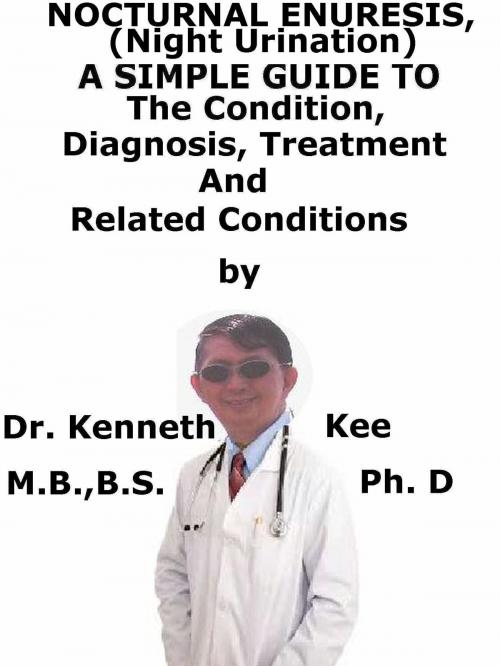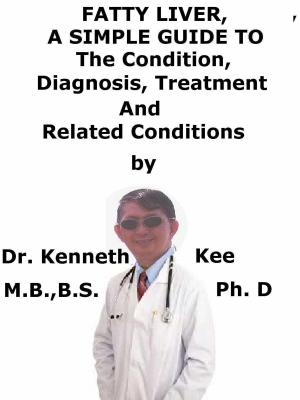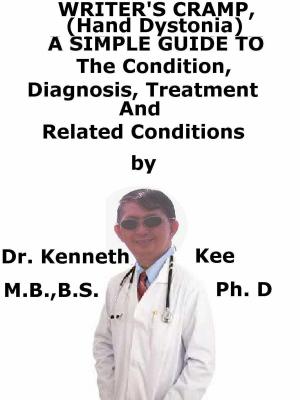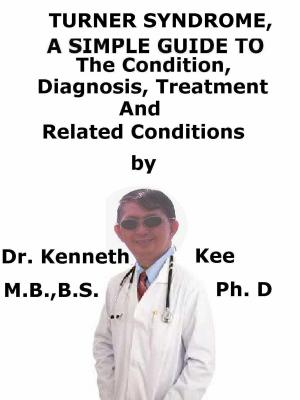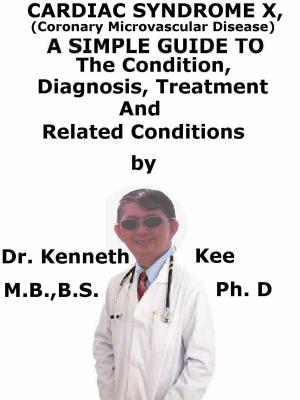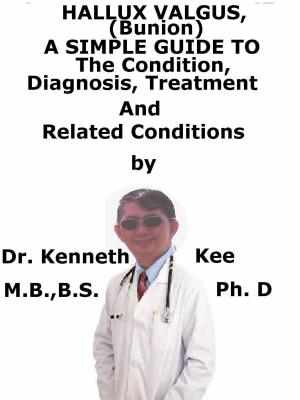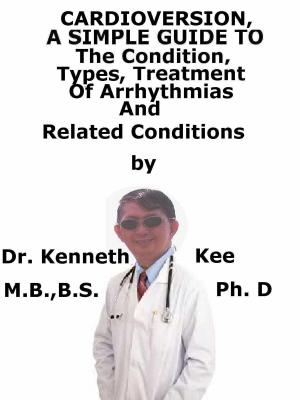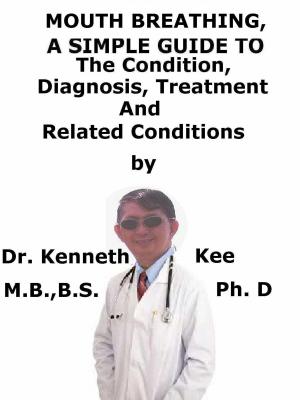Nocturnal Enuresis, (Night Urination) A Simple Guide To The Condition, Diagnosis, Treatment And Related Conditions
Nonfiction, Health & Well Being, Medical, Specialties, Urology| Author: | Kenneth Kee | ISBN: | 9781370787487 |
| Publisher: | Kenneth Kee | Publication: | September 8, 2017 |
| Imprint: | Smashwords Edition | Language: | English |
| Author: | Kenneth Kee |
| ISBN: | 9781370787487 |
| Publisher: | Kenneth Kee |
| Publication: | September 8, 2017 |
| Imprint: | Smashwords Edition |
| Language: | English |
Nocturnal enuresis (NE) is when a child after age 5 or 6 wets the bed at night, more than twice a week.
It affects boys more than girls and has a prevalence of 15%.
There are 2 types of Nocturnal enuresis:
1. Primary enuresis.
Children who have never been consistently dry at night for more than 6 months.
This most often happens when the body makes more urine at night than what the bladder can retain, and the child does not wake up when the bladder is full.
The child's brain has not learned to respond to the signal that the bladder is full.
This is the most frequent reason for nocturnal enuresis.
This is the recurrent involuntary passage of urine during sleep by a child aged 5 years or older, who has never achieved consistent night-time dryness.
This may further be subdivided into:
a. Primary nocturnal enuresis without daytime symptoms: children who have enuresis only at night.
b. Primary nocturnal enuresis with daytime symptoms: those who also have daytime symptoms, such as urgency, frequency, or daytime wetting.
2. Secondary enuresis.
Secondary enuresis indicates children who were dry for at least 6 months, but start nocturnal enuresis again.
There are many reasons that children wet the bed after being fully toilet trained.
It might be physical, emotional, or just a change in sleep.
The cause of nocturnal enuresis is believed to be multi-factoral and that include:
Genetic Causes
Psychological Causes
1.Nocturnal polyuria
2.Small functional bladder capacity
3.Detrusor instability
4.Disorder of sleep arousal
5.Delay in maturation
6.Global maturation delay
Social Causes
Symptoms:
Frequency
Urgency
Daytime wetting.
Difficulty with poor stream.
Pain on urination
The doctor should assess for underlying cause:
1.Constipation.
2.UTI.
3.Diabetes mellitus.
4.Behavioral and emotional difficulties.
5.Child maltreatment
Diagnosis:
The doctor should investigate (and treat) daytime symptoms before addressing enuresis - e.g., symptoms suggestive of diabetes, UTIs or constipation.
The doctor should consider asking parents to keep a diary of the child's nocturnal enuresis patterns, daytime symptoms, toileting pattern and fluid intake
A child should have a physical exam and a urine test to rule out urinary tract infection or other causes.
No further investigations are needed if urinalysis is normal.
Nocturnal enuresis can be very distressing, especially for older children.
It may lead to social isolation, bullying and low self-esteem
Conservative therapies
1.Explanation and reassurance
2.Advise children to avoid caffeine-containing drinks before bedtime.
3.Manage constipation
Simple behavioral therapies:
More children become dry when given rewards
If the child wakes at night, encourage them to use the toilet before returning to sleep
Urotherapy involves:
1.Timed voiding
2.Advice on good hydration
3.Reduction in diuretic fluids
4.Avoiding fluid intake before sleep
5.Emptying the bladder before sleep
Constipation should be treated
Enuresis alarms:
It serves as a conditioning device using a noise to link the stimulus of a full bladder
Treatment is continued for 3-4 months and stopped when the child has remained dry for a consecutive three weeks
Desmopressin
Desmopressin should be given first-line to children over 7 years of age when rapid control is required
Otherwise it should be used second-line after an alarm has been tried.
Tricyclics antidepressant is effective at reducing the number of wet nights during treatment
Imipramine is approved for use in treating nocturnal enuresis in children aged 6 years and above but is reserved for treating resistant cases
Combination therapy with anticholinergic treatment increases the efficacy of treatment.
TABLE OF CONTENT
Introduction
Chapter 1 Nocturnal Enuresis
Chapter 2 Causes
Chapter 3 Symptoms
Chapter 4 Diagnosis
Chapter 5 Treatment
Chapter 6 Prognosis
Chapter 7 Urinary Incontinence
Chapter 8 Cystitis
Epilogue
Nocturnal enuresis (NE) is when a child after age 5 or 6 wets the bed at night, more than twice a week.
It affects boys more than girls and has a prevalence of 15%.
There are 2 types of Nocturnal enuresis:
1. Primary enuresis.
Children who have never been consistently dry at night for more than 6 months.
This most often happens when the body makes more urine at night than what the bladder can retain, and the child does not wake up when the bladder is full.
The child's brain has not learned to respond to the signal that the bladder is full.
This is the most frequent reason for nocturnal enuresis.
This is the recurrent involuntary passage of urine during sleep by a child aged 5 years or older, who has never achieved consistent night-time dryness.
This may further be subdivided into:
a. Primary nocturnal enuresis without daytime symptoms: children who have enuresis only at night.
b. Primary nocturnal enuresis with daytime symptoms: those who also have daytime symptoms, such as urgency, frequency, or daytime wetting.
2. Secondary enuresis.
Secondary enuresis indicates children who were dry for at least 6 months, but start nocturnal enuresis again.
There are many reasons that children wet the bed after being fully toilet trained.
It might be physical, emotional, or just a change in sleep.
The cause of nocturnal enuresis is believed to be multi-factoral and that include:
Genetic Causes
Psychological Causes
1.Nocturnal polyuria
2.Small functional bladder capacity
3.Detrusor instability
4.Disorder of sleep arousal
5.Delay in maturation
6.Global maturation delay
Social Causes
Symptoms:
Frequency
Urgency
Daytime wetting.
Difficulty with poor stream.
Pain on urination
The doctor should assess for underlying cause:
1.Constipation.
2.UTI.
3.Diabetes mellitus.
4.Behavioral and emotional difficulties.
5.Child maltreatment
Diagnosis:
The doctor should investigate (and treat) daytime symptoms before addressing enuresis - e.g., symptoms suggestive of diabetes, UTIs or constipation.
The doctor should consider asking parents to keep a diary of the child's nocturnal enuresis patterns, daytime symptoms, toileting pattern and fluid intake
A child should have a physical exam and a urine test to rule out urinary tract infection or other causes.
No further investigations are needed if urinalysis is normal.
Nocturnal enuresis can be very distressing, especially for older children.
It may lead to social isolation, bullying and low self-esteem
Conservative therapies
1.Explanation and reassurance
2.Advise children to avoid caffeine-containing drinks before bedtime.
3.Manage constipation
Simple behavioral therapies:
More children become dry when given rewards
If the child wakes at night, encourage them to use the toilet before returning to sleep
Urotherapy involves:
1.Timed voiding
2.Advice on good hydration
3.Reduction in diuretic fluids
4.Avoiding fluid intake before sleep
5.Emptying the bladder before sleep
Constipation should be treated
Enuresis alarms:
It serves as a conditioning device using a noise to link the stimulus of a full bladder
Treatment is continued for 3-4 months and stopped when the child has remained dry for a consecutive three weeks
Desmopressin
Desmopressin should be given first-line to children over 7 years of age when rapid control is required
Otherwise it should be used second-line after an alarm has been tried.
Tricyclics antidepressant is effective at reducing the number of wet nights during treatment
Imipramine is approved for use in treating nocturnal enuresis in children aged 6 years and above but is reserved for treating resistant cases
Combination therapy with anticholinergic treatment increases the efficacy of treatment.
TABLE OF CONTENT
Introduction
Chapter 1 Nocturnal Enuresis
Chapter 2 Causes
Chapter 3 Symptoms
Chapter 4 Diagnosis
Chapter 5 Treatment
Chapter 6 Prognosis
Chapter 7 Urinary Incontinence
Chapter 8 Cystitis
Epilogue
